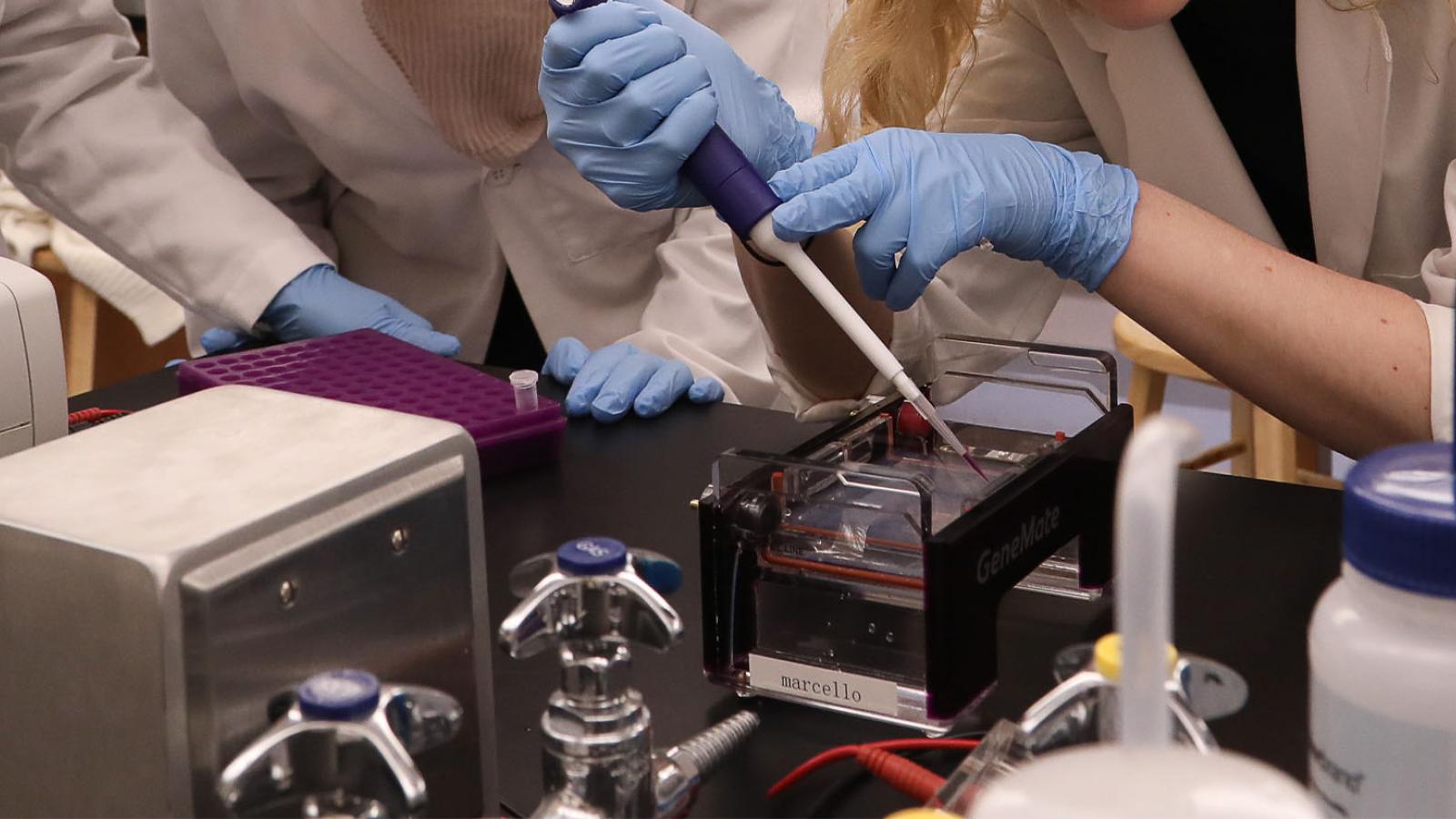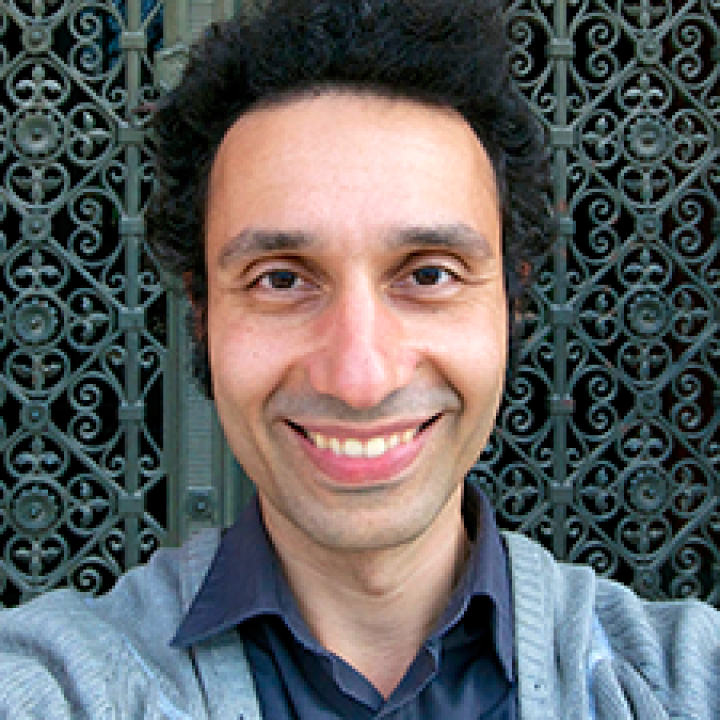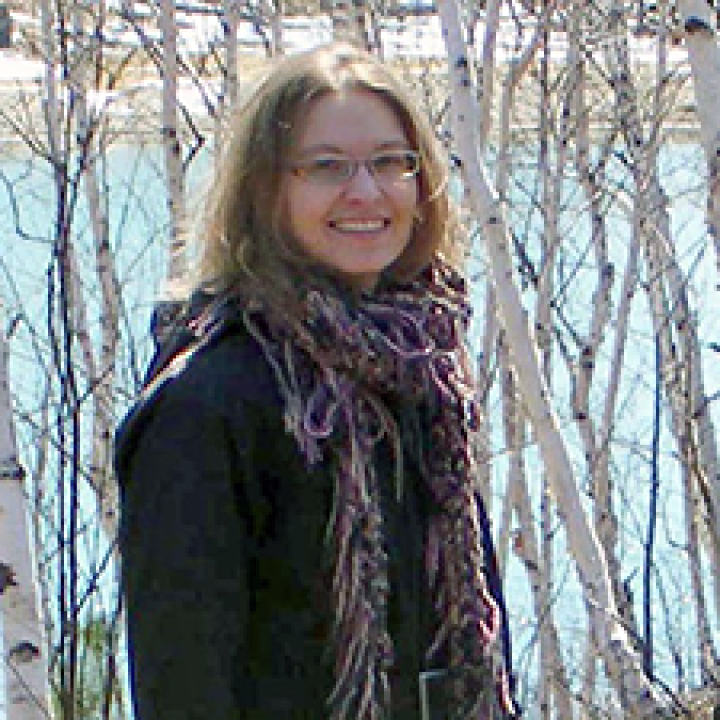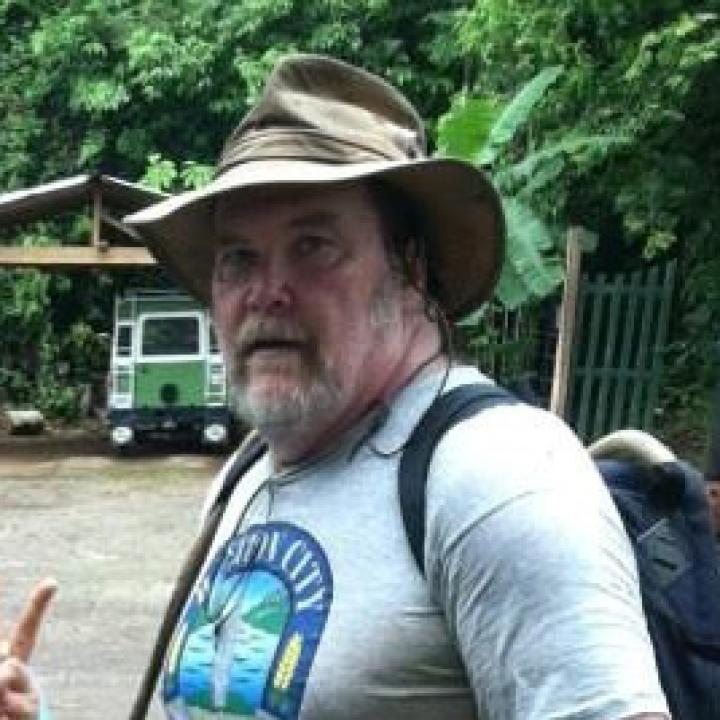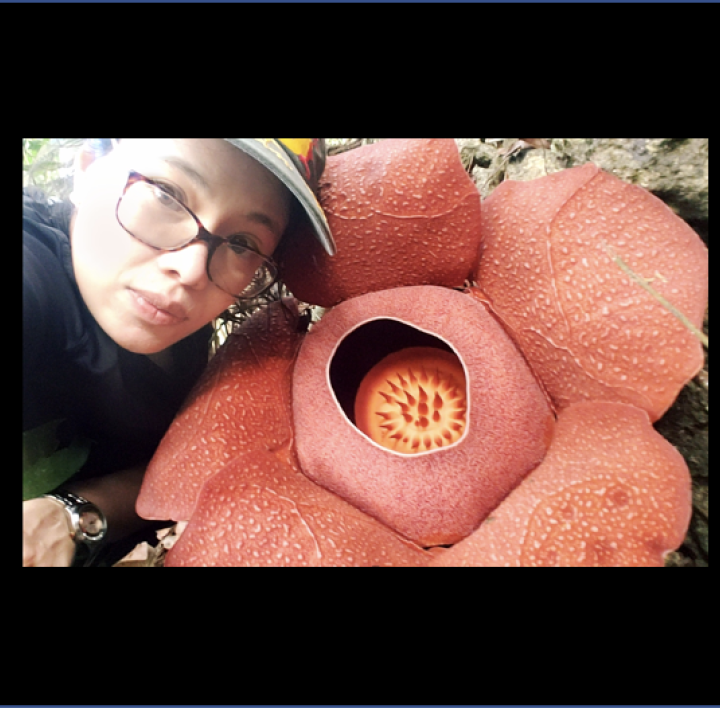In addition to our teaching and research laboratory facilities, the department is affiliated with the Haskins Laboratories on the New York City campus. Students in the Haskins Laboratories work alongside professors to conduct research studies on parasitic pathogens such as the organisms that cause African sleeping sickness, malaria, and tuberculosis.
Biology faculty members engage in scholarly research with undergraduate students. Many of the faculty have extramural funding and continually publish in peer-reviewed scientific journals with undergraduate student authors.
Animal Evolution: David Boerma, PhD
I study animal evolution through the lens of form and function.
The overall goal of my research program is to resolve traits that drive species diversification by studying the evolutionary links among animal anatomy, biomechanics, and ecology. My lab takes an integrative approach, leveraging museum collections, field-based experiments, and phylogenetic comparative methods to investigate the evolution of morphology and biomechanics involved in locomotion, especially flight in bats.
My recent research has focused on learning how bats recover from aerial stumbles and how their landing maneuvers have evolved in concert with the physical properties of their roosts.
Gravitropism and Circumnutations: Eric Brenner, PhD
My research group is working to better identify and understand the signals that regulate plant movement using time lapse photography combined with molecular genetic analysis in the model plant species, Arabidopsis. In particular we are studying the molecular genetics of gravitropism (movement of plant flowering shoots away from gravity) and circumnutations (the back and forth swaying found in all plants). To do this we have developed in app, Plant Tracer, that enables researchers to quantify the movement of plant videos using their cell phones. Plant Tracer is being used in a crowd sourced student mutant screen to identify the genes involved in shoot gravitropism and circumnutation.
In addition, my research group is also interested on better understanding the growth behavior of two non-native invasive plants that are supplanting native species in North America. This includes bamboo and Japanese stilt grass. This project involves both lab and field work examining the population structure in the field using molecular tools in the lab as well as time-lapse photography.
Ion Channels in Health and Disease: Zafir Buraei, PhD
For the past ten years, our goal has been to understand the structure and function of ion channels in health and disease. These are cell membrane proteins that control the passage of ions, such as calcium or sodium, into the cell. Because ion movement gives rise to electrical currents, ion channels are responsible for all electrical signaling in an organism. Indeed, there are only 300 different ion channels, out of ~ 15,000 genes, yet ~ 25% of all drugs we use today target ion channels. Mutations in ion channels cause neurological, cardiovascular and musculoskeletal disease, such as: autism, ADHD, epilepsy, dystrophy, migraine, cardiac arrhythmias, hypertension, deafness, blindness, and other disease.
Our studies aim to understand, at the molecular level, how ion channel mutations disrupt normal channel function. We thus artificially express, and then compare normal and mutant ion channel currents in frog oocytes - cells devoid of potentially interfering ion channels. Our results shed light on the molecular mechanisms of disease, and pinpoint the direction for personalized treatment.
Current projects in the lab:
- Based on previous work (PNAS, 2012) we are studying the effects of several mutations, in calcium channels, that cause epilepsy.
- We are studying the effects of Presenilin on the function of several channels. Presenilin is a protein that cuts other proteins, and whose mutations cause Alzheimer’s disease.
Future interests: In a series of studies (Biophysical J., 2005; Neuropharmacology; 2007; Neurochemistry 2008) we have previously discovered and characterized the first neuronal voltage-gated calcium channel agonist (drug that activates the channel). We would like to collaborate with chemists that will introduce modifications to this drug, to enhance its potency and specificity. This drug enhances neurotransmitter release and could potentially be used to alleviate the symptoms of several neurological disorders.
Department Chairperson
Conservation Biology: Erika Crispo, PhD
Erika Crispo is interested in conservation biology, the evolution of wild animal populations, and application of evolutionary biology to solve practical problems. She uses genetic tools to understand how we can manage threatened populations. Some of her past and current research projects involve:
- Using DNA barcoding to identify shark species sold at NYC markets, with the goal of public awareness that they may be inadvertently purchasing endangered or threatened species, and ultimately curbing the sale and consumption of these species.
- Comparing the expression of stress response genes in Eastern oyster (Crassostrea virginica) to understand how environmental conditions impact wild versus restoration populations, with the intention of being able to inform restoration practices about the adaptation of different oyster strains.
- Meta-analysis to reveal best practices in restoration science for long-term persistence of managed populations. Our study determined that, on average, conservation projects that aimed in increase genetic diversity in restoration populations yielded the best long-term results.
- Understanding the molecular basis of adaptation to hypoxia in fish (Pseudocrenilabrus multicolor), using a variety of tools including population genetic analyses to identify barriers to gene flow among populations from different oxygen regimes, quantifying epigenetic variation between fish raised under high- and low-oxygen conditions, and determining hypoxia’s effect on gene expression. A long-term outcome of this work might be the possibility of genetically engineering fish that are better able to withstand the hypoxic conditions that are becoming more widespread due to human activities.
Associate Chair
Microbial Ecology: Bill Eaton, PhD
Professor Eaton has been in academia for 32 years where he has conducted research on aquatic animal infectious diseases for 14 years, and for the past 17 years has been conducting research on microbial ecology projects in the Pacific Northwest, Pennsylvania, New Jersey, and Central America. Collectively, this has resulted in 54 publications in print, and 4 more in review. He has received grant funding from both the NSERC and CIDA programs in Canada, and NSF, USDA, and NASA in the US. Most recently, he has mentored 47 undergraduate research students, 3 MSc graduate research students, and 1 PhD research student 10 graduate students conducting research on tropical forest soil microbial ecology. He has primarily worked in the jungles of Belize, and both the cloud forests and tropical lowland forests of Costa Rica, but has also conducted some research work in the New Jersey Pine Barrens. His research is focused on understanding how climate change, land management and other disturbances, and habitat remediation affect soil ecosystems. For this work, he links the differences in the soil carbon and nitrogen cycle dynamic activities and the soil microbial biomass levels, to the differences in the biodiversity, functional diversity, and community structure of soil fungal, bacterial and invertebrate populations (as determined by Next Generation DNA Sequencing techniques) among and between habitats to develop ecological pictures of the soil ecosystem condition, and develops models to determine what the ecological drivers of the biogeochemical cycles might be. He takes undergraduate research students to the jungles of Costa Rica each year to conduct research with him as part of his BIO 301 course (Tropical Ecosystem Assessment).
Professor Eaton’s Two Main Current Project Areas:
- Effects of Poor Land Management and Restoration Ecological Practices on Cloud Forests Habitat Soil Ecosystems in Monteverde, Costa Rica
- The Effects of a Hurricane on the Soil Ecosystems Within a Humid Tropical Forest in the Northern Zone of Costa Rica.
Organismal and Ecosystem Resilience and Responses: Wei Feng, PhD
I study organismal and ecosystem resilience and responses to anthropogenic changes, including urbanization, climate warming, and biological invasions. Examples of my research topics are evident from previous grant funding, including:
Grants, Sponsored Research, and Contracts
Advancing Key Curriculums of Ecology and Environmental Sciences for Regional Universities in Kazakhstan & Beyond
Chen, J., Fang, W., Graham, N., Fang, P., Knight, C., Ranjeet, J., Allington, G. & Almakhanova, G. January 2022 - September 2022. US Embassy in Kazakhstan and American Councils for International Education, Federal, $38,000.00. Funded.
Modernizing Curriculum towards the Goals of UN SDGs for Central Asian Universities: Climate Action and Sustainability Development.
Fang, W., Chen, J., Groffman, P., Gurevitch, J., Fan, P. & Hendrey, G. January 2022 - September 2022. US Embassy in Tashkent, Uzbekistan and administered by American Councils, Federal, $23,998.00. Funded.
Exploring the color change of male African cichlid fish Astatotilapia burtoni, in Lake Tanganyika in response to urbanization and algal bloom.
Alvarado, S. & Fang, W. August 2019 - July 2022. National Science Foundation 18-600 Program, Federal, $499,995.00. Funded.
Fertilization and Egg Activation: Matthew Marcello, PhD
Matthew R. Marcello received his BS in Molecular Biology and Microbiology from the University of Central Florida, and his PhD in Biochemistry and Molecular Biology from the Johns Hopkins Bloomberg School of Public Health. Dr. Marcello’s research focus is on understanding the molecular basis of sperm-egg interactions and egg activation after fertilization. Dr. Marcello uses the nematode Caenorhabditis elegans as a model to understand the genetics of fertilization and egg activation and in order to identify markers of infertility and develop novel contraceptives.
Plant Evolution: JeanMaire Molina, PhD
My research interests encompass plant evolution, community ecology, conservation, and ethnobotany. The versatility of phylogenetics in elucidating plant evolutionary relationships, understanding the mechanisms that have produced current plant distributions, as well as its application in community ecology and herbal medicine, make it indispensable to my research. The questions I explore often span basic biological processes and applied solutions, bridging academic inquiry with societal impact. This work is driven by a desire to preserve endangered plant species through interdisciplinary approaches while using my platform as college teacher to cultivate student interests in biodiversity science. The diversity of my research projects also makes it easy for students to find a project that suits their interests, from basic plant biological research to more applied studies such as herbal medicine. The 2 main foci of my research are:
I. Biology of Endangered Parasitic Plants. Parasitic plants are evolutionary marvels that challenge our understanding of plant biology. My research focuses on the endangered southeast Asian Rafflesia, which produces the world’s largest flowers and known for its complete loss of the chloroplast genome, which is unprecedented in the plant kingdom. Supported by NSF funding (2022–2024) and a partnership with the national US Botanic Garden (2015-present), my research integrates genomics, metabolomics, microbial ecology, and plant propagation to explore host-parasite interactions and conservation applications. I have also been expanding my research into the biology of other plant parasitic plants, such as the mycoheterotrophic ghostpipe plant Monotropa uniflora (USA) and the malodorous Hydnora solmsiana (Africa), both of which have no significant economic impact on human crops. Studying the evolutionary and ecological genomics of unrelated plant parasites like Rafflesia, Monotropa, and Hydnora reveals how distinct species independently evolve similar traits, enhancing our understanding of convergent evolution, host-parasite interactions, and genomic innovations while informing conservation strategies for endangered parasitic plants.
II. DNA Barcoding and Ethnobotany of Herbal Medicines. The confluence of diverse immigrant cultures in New York City and the accessibility of many traditional herbal medicines make this city an interesting venue to understand the dynamics of urban ethnobotany. Increased demand for these alternative medicines and lack of oversight from the US Food & Drug Administration (FDA) encourage unscrupulous herbal substitutions that may be revealed by DNA barcoding. In my lab I use DNA barcoding to validate herbal products and uncover adulteration, addressing public health concerns and improving pharmacovigilance. This work engages students in applied molecular biology such as the use of nanopore sequencing in authenticating herbal supplements sold in drug stores. I am also exploring phylogenetic patterns in traditional herbal medicine use that may guide drug discovery efforts. For instance, my recent studies with students analyzed the evolutionary relationships of plants with dermatological and anti-cancer applications, providing insights into potential sources of novel bioactive compounds.
Biochemistry of DNA-processing Enzymes: Dan Strahs, PhD
Professor Strahs’ research focuses on understanding the biochemistry of DNA-processing enzymes. His lab studies the enzyme topoisomerase IA, an enzyme of prokaryotic organisms, which manages the supercoiling generated during transcription. Interest in this enzyme stems from the possibility of affecting the host organism. To study this, his laboratory employs both computational and experimental methods to investigate topoisomerase IA. Projects conducted by students in his laboratory have focused on active site mutations, large scale motions in an enzyme/DNA substrate complex, the modeling of homologous enzymes, and the docking of small-molecules into the topoisomerase active site.
